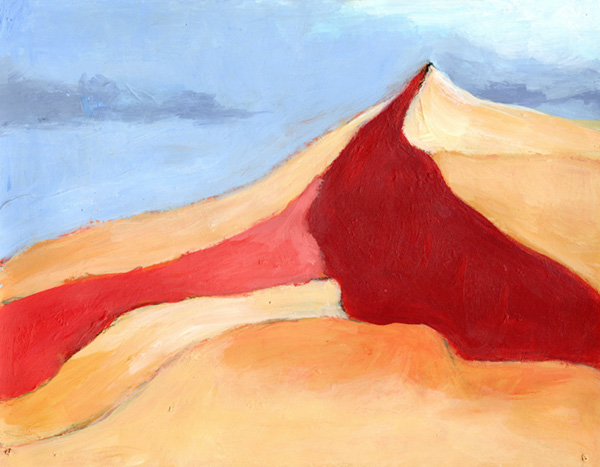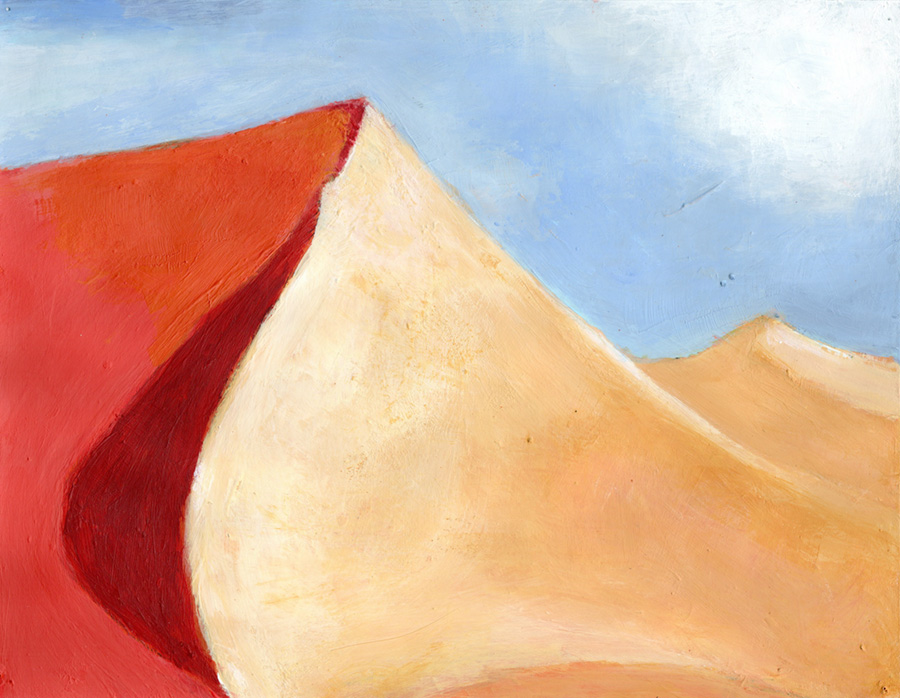Morocco’s star dune
The mention of a migrating star dune in an article caught my attention right away. The combination of the words — moving, star and dune — to describe a mass of rippling banks of sand is compelling. I associate stars with the celestial and starfish with the sea. Dunes are colossal structures moored to deserts.
Lala Lallia is one of Earth’s oldest star dunes. Found on Morocco’s Erg Chebbi sand sea, it looks like a pyramid when viewed from the ground. When seen from above, 3-4 wedges of sand radiate out from a central peak. The dune’s lyrical name, Lala Lallia, translates as the highest sacred point in the Berber language.

Sculpting sand
Dunes form when sand piles up on the windward side more and more until the edge of the dune collapses under its own weight. As the dunes collapse, they form ridges in the same direction as the wind.
The extraordinary star shape of Lala Lallia is caused by opposing winds from the southwest and northeast. By changing wind direction, the sand piles up on multiple sides of the dune and the dune never collapses.
Earth’s largest star dunes loom in the deserts of China, Namibia, Algeria, Saudi Arabia and the United States. These massive mountains of sand have also been observed on Mars, as well as on Saturn’s largest moon, Titan.
Migrating dunes
A persistent third wind blowing from the east is progressively moving Morocco’s star dune towards the west. It is migrating across the desert at a rate of about 50 centimeters a year.

Windswept history
The dune climbs 330 feet (100 meters) high and is 2,300 feet (700 meters) wide. British scientists have only recently been able to use radar to determine the age and map the layers within the dunes. Lala Lallia is the first of its kind to be studied.
Geologists used a method called luminescence dating to determine when winds deposited sands to give shape to the mounds. This technique uses minerals in the sand to estimate when they last received sunlight.
Using an old piece of drainpipe, they gathered samples without exposing them to sunlight. In the lab, they used newly developed tools to release the radioactivity stored in the sand. Measurable light is emitted when the energy is released.
Scientists estimate that the dune’s base formed around 13,000 years ago. Its growth continued until approximately 8,000 years ago, at which point its size became stable. A climate event likely triggered the star dune’s significant growth in the last 1,000 years.
I appreciate the harmonious spontaneity and unwavering nature of star dunes. Inspired by a phrase, I embarked on a fascinating journey of exploration, uncovering the beauty of desert regions around the world.


